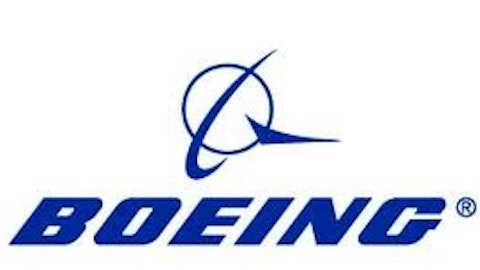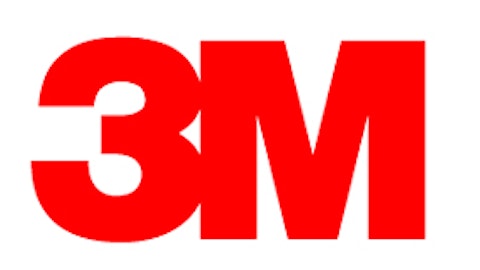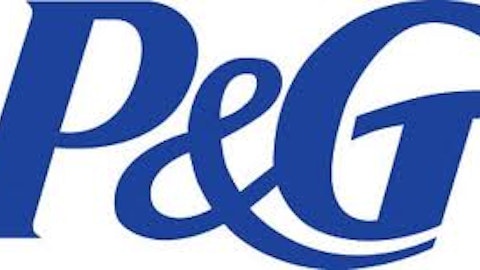General Electric Company (NYSE:GE), founded by Thomas Edison, is the oldest company in the Dow. In the century since its first public listing, GE has evolved into one of the largest companies in the world, operating in over 100 countries with a widely diversified portfolio invested in aviation, healthcare, energy and home & business solutions – making it a bellwether of the global economy.
Today, as the Dow closes in on record highs, investors wonder – is GE still burning bright like its iconic light bulb, or about to burn out?
During its fourth quarter, General Electric Company (NYSE:GE) earned 39 cents per share, up from 36 cents per share a year earlier. It topped the analyst consensus by a penny. The company attributed its growth to strong demand for oil and natural gas equipment sales.
Meanwhile, revenue rose to $38.5 billion, an increase from $37.7 billion in the prior year quarter. GE Capital, its financing arm, was its most important segment, reporting 1.7% revenue growth to $11.77 billion. Revenue from its industrial business rose 3.9% to $2.07 billion.
Despite those gains, GE missed the analyst consensus of $40 billion.
Too far, too fast?
General Electric Company (NYSE:GE)’s stock price hit a new 52-week high in the first week of March. Although the stock has yet to reclaim its pre-recession price levels, the stock’s 23% climb over the past 12 months has prompted a bearish response from some analysts, such as Nomura Securities analyst Shannon O’Callaghan, who downgraded the stock from “buy” to “neutral.”
Is GE Capital dangerous?
GE still attributed 46% (before taxes) of its 2012 earnings from GE Capital, its maligned financial arm that nearly sank the company during the financial crisis. GE Capital’s earnings rose from $6.58 billion in 2011 to $7.40 billion in 2012. O’Callaghan believes that reducing that exposure to 30% to 35% would better insulate the company from any unpredictable financial headwinds.
For now, GE is not concerned about the size of GE Capital, since the segment paid out $6.4 billion in dividends to its parent company last year.
GE used this excess capital to repurchase $5.2 billion in common shares throughout 2012, and raised its quarterly dividend on common shares by 2 cents to 19 cents per share, bumping up its yield to 3.2%.
I believe that analyst concerns about history repeating itself are overblown. General Electric Company (NYSE:GE)’s business of providing financing options to its industrial customers is still an excellent way to generate additional revenue on top of equipment sales, considering that a bulk of GE’s industrial gains last quarter originated from oil and gas equipment.
Healthcare expansion
GE’s healthcare division is one of the company’s most important growth sectors, accounting for $5.18 billion, or 13.45%, of fourth quarter revenues. The U.K.-based division, which employs over 46,000, is split into seven operating segments.
General Electric Company (NYSE:GE) recently expanded its healthcare segment by inking a deal with HealthTrust to provide infant care solutions, such as incubators and warmers at its hospitals.
One important aspect of this business is GE’s Life Care Solutions, which provides equipment for the care of critically ill newborns in the NICU (Neonatal Intensive Care Unit).
Despite optimism regarding the healthcare segment, its fourth quarter sales were flat from the previous year, and only rose 1% for the full year. However, operating profit rose 7% for the fourth quarter and 4% for the year, signifying improving margins.
Versus competitors
General Electric’s primary competitors are Netherlands-based Koninklijke Philips Electronics NV (ADR) (NYSE:PHG) and Germany-based Siemens AG (ADR) (NYSE:SI). Although the portfolios of these three companies are all widely diversified, they overlap in enough industries to be considered rivals.
Koninklijke Philips Electronics NV
Koninklijke Philips Electronics NV (ADR) (NYSE:PHG) and GE compete with each other in the healthcare and consumer products market. Philips’ consumer products, which include the Sonicare toothbrush, SmartTouch/Speed-XL shavers and Senseo coffee maker, have been well-received worldwide – especially in China and Eastern Europe.
Philips’ healthcare segment includes medical products, such as x-ray and ultrasound machines. It also owns Lifeline Systems, a North American personal emergency response system, as well as Avent, a producer of infant care products in the U.K. and the U.S.
While Koninklijke Philips Electronics NV (ADR) (NYSE:PHG)’s healthcare and consumer products divisions have reported promising growth over the past decade, it is still struggling with maintaining margins. During the fourth quarter, Philips’ profit margin dipped to -2.19%, while GE’s strengthened to 11.32%.
Siemens AG
Although Siemens AG (ADR) (NYSE:SI) is more diversified than Philips, it is not as diversified as GE. Still, Siemens competes with GE in the key sectors of healthcare, industry and energy.
Siemens’ healthcare division also produces x-ray and ultrasound equipment, among other widely used types of equipment. Its industry division is broken into six divisions focused on different aspects of building equipment. Siemens’ energy sector produces equipment for both fossil power generation as well as renewable energy solutions.
During the fourth quarter, Siemens AG (ADR) (NYSE:SI) reported a profit margin of 7.14%, faring better than Philips but worse than GE.
To better gauge the future growth potential of these three companies, we need to look at three things: its stock fundamentals compared to its top and bottom line growth over the past three years.
| Forward P/E | 5-year PEG | Price to Sales (ttm) | Price to Book | Debt to Equity | Return on Equity | Profit Margin (annual) | |
| General Electric | 12.65 | 1.33 | 1.67 | 2.00 | 322.30 | 12.09% | 9.29% |
| Siemens AG | 11.20 | 0.41 | 0.90 | 2.36 | 66.64 | 16.01% | 5.46% |
| Koninklijke Philips Electronics | 13.38 | 14.95 | 0.84 | 1.88 | 40.58 | 2.23% | 0.91% |
| Advantage | Siemens | Siemens | Koninklijke Philips | Koninklijke Philips | Koninklijke Philips | Siemens | General Electric |
Source: Yahoo Finance, March 13
Fundamentally, GE isn’t the best value in any category except for its profit margin, but its valuation is still fairly cheap. However, that debt to equity ratio of 322.30 tells us that GE still has very high debt of $414.06 billion, while it only has $77.36 billion of cash on hand.
GE’s free cash flow has also dwindled 28.29% over the past 12 months, down to a current operating cash flow of $31.33 billion.
However, GE sold off its remaining 49% stake in NBCUniversal to Comcast Corporation (NASDAQ:CMCSA) for $16.7 billion last month, which should help boost its near-term cash flow.
Although GE’s top line has been declining over the past three years, it has started to post positive revenue growth over the past 12 months. GE’s bottom line growth has also comfortably outpaced its peers, as a result of its stronger margins. That indicates that GE’s debt level, while high, is manageable if the company maintains its current growth trajectory.
The Foolish Bottom Line
Strong demand for industrial products along with its paired financing options, should continue to boost top and bottom line growth in 2013. If GE downsizes its financial arm, I expect its healthcare segment to start posting more robust growth to offset those losses. In other words, although GE may be burning bright now, I believe it can burn even brighter.
The article Is General Electric Burning Bright or Burning Out? originally appeared on Fool.com and is written by Leo Sun.
Copyright © 1995 – 2013 The Motley Fool, LLC. All rights reserved. The Motley Fool has a disclosure policy.







